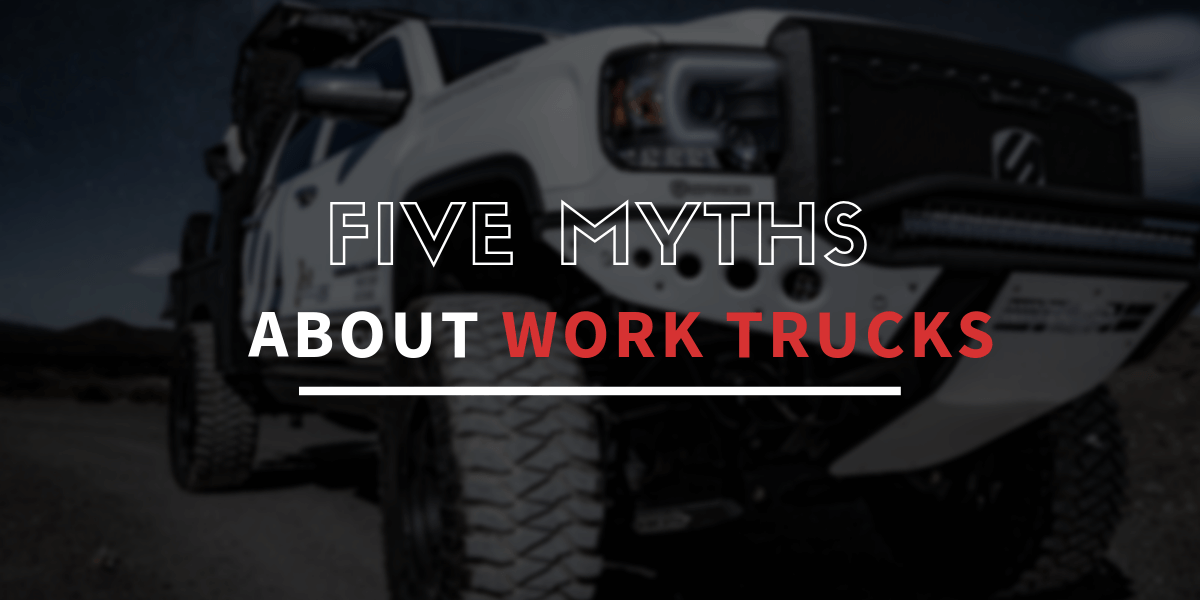
There are many misconceptions that people have about work trucks. Though some may be based on a degree of truth, they may be harmful if relied on as fact under the wrong circumstances.
When it comes to specifying work trucks, misconceptions could result in problems that create serious trouble for a fleet and the company that depends on it.
These issues can include:
- decreased productivity
- lost profits
- higher operating costs
- and even damage to the reputation of the company
The following are five problematic myths that even experienced operators sometimes believe to be true:
1. Truck selection will not have a significant impact on productivity.
When considering the human side of your fleet assets, it is important not to underestimate the value well-equipped trucks will provide. Vehicles should be comfortable and equipped with the proper body and accessories, to allow for organized storage and ease of use. Having the right equipment will have a very significant effect on productivity and will keep your labor force safer.
2. Under-engineering a truck is a way to reduce costs without risk.
Improper specifications or under-engineering a truck could mean a number of things ranging from a lower-power engine to marginal GVWR for a base interior package. In many cases, the reason to under-spec a truck is to save money. However, in reality, an under-powered truck will burn more fuel and require more maintenance, which means it will be more costly to operate in the long haul.
3. Trucks are not affected by minor changes in payload.
What seems like an insignificant payload change could have unforeseen consequences. Minor changes may have a significant effect on performance and capacity. These changes can also be costly down the road in terms of more frequent repairs, downtime, and even reduced vehicle resale value. Payload changes can also mean higher emissions and other issues that can lead to expensive compliance problems.
4. As long as GCWR is not exceeded, any size trailer can be hauled.
When matching a truck with a trailer, it is essential to have the right equipment to match up with the trailer, including: brakes, the right hitch height, and adequate lighting. All factors should be considered, including federal DOT regulations as well as local considerations, such as road weight restrictions. Fleet managers need to know the actual total weight of the truck and trailer and compare it to the truck’s GCWR.
5. The longer the truck cycle, the more value you get from the truck.
While it may seem like the company is getting the most out of the asset if a truck cycle lasts longer, an older truck actually is more likely to cost more to operate (which negates that benefit and then some). Trucks that are allowed to run too long will cost more in terms of maintenance and fuel. Older trucks tend to experience costly road emergencies, which can in turn mean higher and more frequent expense, as well as lost productivity.
With over seventy years in the business, Drake-Scruggs Equipment has learned a thing or two about work trucks. We are focused on making sure your fleet is operating in top condition every day. We hope that clearing up these myths will help you to make better decisions. Call us today or contact us to see how we can improve your work trucks for today and tomorrow.

